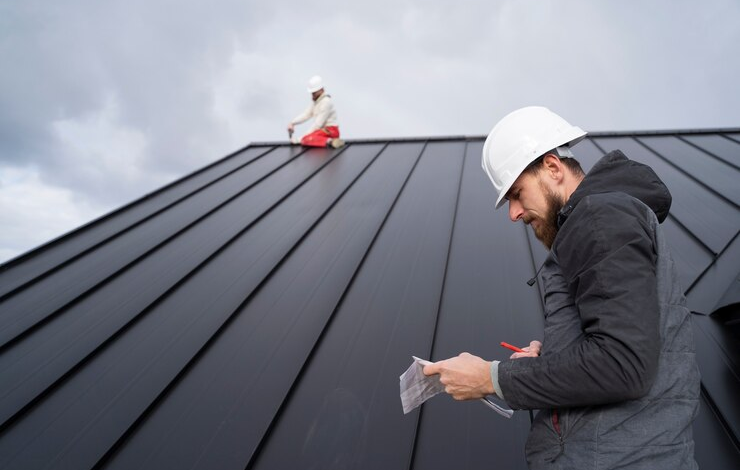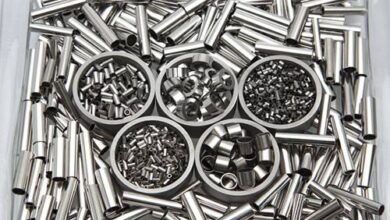10 Long-Term Strategies for Preventing Roof Leakage and Damage

Roof leakage and damage can be a homeowner’s worst nightmare, leading to costly repairs and potential safety hazards.
Implementing long-term strategies for preventing roof issues is essential in maintaining the integrity of your home.
From regular inspections to proper maintenance, there are various steps you can take to avoid leaks and damage.
Working with reputable and experienced roofing contractors from Pyramid Roofing Company, Inc. will help ensure that your roof is properly installed and maintained.
In this guide, we will explore effective long-term strategies to protect your roof and ultimately safeguard your home from potential water damage and deterioration.
1. Regular Roof Inspections
Regular roof inspections are essential for maintaining the integrity of your roof and preventing costly leaks and damage.
By proactively assessing the condition of your roof on a consistent basis, you can identify and address any issues before they escalate into major problems.
Implementing this long-term strategy can help extend the lifespan of your roof and protect your property investment.
2. Maintain Gutters and Downspouts
To avoid roof leakage and structural damage, regular maintenance of gutters and downspouts is crucial.
By ensuring they are clear of debris and properly directing water away from the roof and foundation, you can safeguard your home from costly repairs and potential water damage.
Implementing a proactive approach to maintaining gutters and downspouts is a key long-term strategy for protecting your property.
3. Proper Attic Ventilation
A well-ventilated attic helps regulate temperature and moisture levels, preventing condensation buildup that can damage the roof structure.
Install vents and fans to promote airflow and prevent moisture buildup in the attic. Proper insulation also aids in maintaining consistent temperature and reducing energy costs.
4. Trim Overhanging Branches
One effective long-term strategy for preventing roof leakage and damage is to regularly trim overhanging branches.
- Regular Trimming: Consistently trim overhanging branches to prevent contact with the roof surface.
- Risk Reduction: Trimming reduces the likelihood of branches rubbing against or falling onto the roof, minimizing potential damage.
- Shingle Protection: Prevents shingle damage caused by abrasive branches, preserving the integrity of the roof’s protective layer.
- Gutter Maintenance: Reduces the accumulation of leaves and debris in gutters, preventing clogs that can lead to water backup and roof leaks.
- Cost Savings: Proactive tree maintenance lowers the risk of costly repairs, saving homeowners time and money in the long run.
5. Address Flashing Issues
Addressing flashing issues is a crucial aspect of long-term strategies for preventing roof leakage and damage.
Flashing serves as a protective barrier against water intrusion at vulnerable spots like roof edges, penetrations, and intersections.
Proper installation, maintenance, and repair of flashing can significantly extend the lifespan of a roof, ensuring the structural integrity of the building and preventing costly repairs.
6. Seal Roof Penetrations
Seal Roof Penetrations are a crucial aspect of long-term strategies for preventing roof leakage and damage.
By effectively sealing any openings or penetrations on the roof, such as vents, pipes, or HVAC units, you can ensure that water and moisture stay out, protecting your building from potential leaks and structural damage.
Proper sealing techniques can prolong the lifespan of your roof.
7. Invest in High-Quality Materials
Investing in high-quality materials is a crucial long-term strategy for preventing roof leakage and damage.
- Quality Assurance: Opt for high-quality roofing materials known for their durability and reliability.
- Longevity: Investing in superior materials ensures the roof’s longevity, reducing the frequency of repairs and replacements.
- Structural Integrity: Durable materials contribute to the overall structural integrity of the roof, enhancing its ability to withstand various weather conditions.
- Waterproofing: High-quality materials are often designed to provide superior waterproofing properties, minimizing the risk of water infiltration and leaks.
- Cost-Effectiveness: Though initial costs may be higher, investing in quality materials translates to long-term savings by reducing the need for frequent repairs and replacements.
8. Implement Ice and Water Shield
Implementing Ice and Water Shield is a crucial step in ensuring the long-term protection of your roof against leakage and damage.
This protective barrier acts as a waterproof membrane, offering an extra layer of defense against ice dams, heavy rains, and other environmental hazards.
By incorporating this strategy into your roofing maintenance plan, you can significantly reduce the risk of costly repairs down the line.
9. Conduct Prompt Repairs
In the realm of long-term strategies for preventing roof leakage and damage, one crucial step stands out: conducting prompt repairs.
Timely intervention can make all the difference in maintaining the integrity of your roof and preventing costly water damage.
Addressing issues swiftly can prolong the lifespan of your roof, ensuring a solid defense against leaks and structural degradation.
10. Plan for Proper Drainage
Ensure that your roof has adequate drainage to prevent water from pooling and causing damage. Evaluate the slope of your roof and make necessary adjustments to promote water runoff.
Consider installing additional drainage systems such as scuppers or gutter extensions to redirect water away from vulnerable areas.
Conclusion
Preventing roof leakage and damage requires a proactive approach and ongoing maintenance efforts.
By implementing these 10 long-term strategies, you can safeguard your roof against leaks and extend its lifespan, ultimately protecting your home and investment for years to come.
Regular inspections, proper maintenance, and timely repairs are key to preserving the integrity of your roof and ensuring peace of mind for homeowners.



